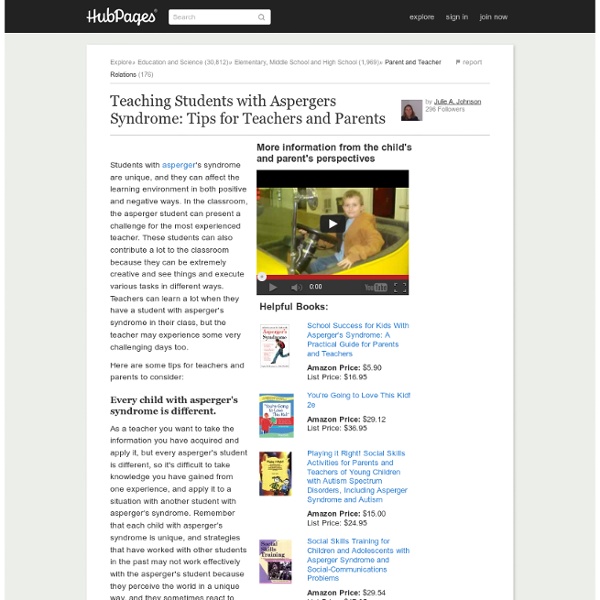Autism Information | Use Visual Strategies for Autism
Autism is an umbrella term for a wide spectrum of disorders referred to as Pervasive Developmental Disorders (PDD) or Autism Spectrum Disorders (ASD). They are a group of neurobiological disorders that affect an individual’s ability to interact, communicate, relate, play, imagine, and learn. The term SPECTRUM is an important part of understanding autism because of the wide range of intensity, symptoms, behaviors and types of problems. There is a range of skills and challenges in individuals on the autism spectrum. On the other end of the spectrum are individuals with Asperger’s Syndrome, sometimes referred to as a high-functioning form of autism. Individuals with Autism Spectrum Disorders typically demonstrate challenges in developing effective communication, appropriate behavior and successful social skills. Our goal is to learn how these students learn best and to develop teaching strategies and communication styles to help them become effective communicators.
julie's Goals.url
Caregiver’s Guide to Autism Symptoms
For caregivers, understanding autism symptoms is key to coping with them. Why do I need to register or sign in for WebMD to save? We will provide you with a dropdown of all your saved articles when you are registered and signed in. One of the most difficult aspects of being a caregiver for someone with autism – whether a child or an adult – is the inability to understand what it’s really like for him. Autism is a condition that can be isolating for the person who has it, and autism symptoms are tough to understand from the outside. “I like to think of autism as a different way of being,” says Stephen Shore, PhD, who was diagnosed with autism at age 2. Recommended Related to Brain & Nervous System Spina Bifida Important It is possible that the main title of the report Spina Bifida is not the name you expected. Read the Spina Bifida article > > Every person with autism is different, and there is no single autistic perspective. 2 Keys to Understanding Autism Symptoms Continue reading below...
"Kultur Er Noget Man Er"
Feltarbejde, DKK. indledning Jeg har valgt at prøve kræfter med at igangsætte en æstetisk aktivitet hos en borger der bruger alternativ supplerende kommunikation. Processen er sat ind i SMTTE modellen og nærmere beskrevet under punktet: forløb. Sammenhæng: Borgeren som jeg har fået mulighed at arbejde med er diagnosticeret med infantil autisme. Da borgerens mentale tilstand er på ca. 2 år, har jeg valgt at inddrage Vygotsky, i forhold til hans teori om sprogtilegnelse via nærmeste udviklingszone. Borgeren er diagnosticeret indenfor autisme spektrummet, og han har en forholdsvis høj grad af mental retardering som tidligere nævnt, hvilket for øvrig er kendetegnet ved 70 % af mennesker diagnosticeret inden for autisme. Han er altså udfordret indenfor alle tre punkter i Lorna Wing`s triade : kommunikation, sociale kompetencer og helhedsopfattelse. Tiltag: Jeg vil med øje for Vygotskys teori, nærmeste udviklingszone, prøve at udarbejde en aktivitet som omhandler et væsentligt punkt. Evaluering:
Genes to Cognition Online
bloomsapps
Using Blooms Taxonomy in education is a highly effective way to scaffold learning for the students. With the recent popularity and pervasive nature of iOS devices in school districts it is essential for educators to understand how to implement Blooms in the classroom using the apps that are available. While this list is by no means fully comprehensive, it will assist educators in getting started when implementing iOS devices in the classroom. This site will change almost daily as it will be updated with new and exciting apps! If you find any that you have worked with in your classroom please email dmileham@e1b.org or tweet @bloomsapps or @dmileham75 with your suggestions. Two Links to some iTunesU courses relating to iOS Integration: 1 iPad by Erie 1 Boards of Cooperative Educational Services ( Movie Making\Digital Storytelling Camera to PDF Free - cool little app that turns your device into a scanner. LiveBinders: I would be remiss if I didn't post this.
Sociale medier i undervisningen | DCUM
De sociale medier og brugen af IT i undervisningen har endnu ikke vundet stor udbredelse i uddannelsessystemet. Det rummer imidlertid nogle potentialer, der både kan fremme læring, samarbejde, motivation og et godt undervisningsmiljø. De unge bruger i høj grad de sociale medier i deres privatsfære, men det er sjældent at se de nye sociale medier anvendt i en formel læringskontekst i danske uddannelsesinstitutioner. De unge bruger de sociale medier og mobiltelefonen til social kommunikation med hinanden og til at finde ressourcer på nettet. Mange unge er storforbrugere af Facebook, Messenger, YouTube og mobiltelefonen, hvorimod fx e-mail opleves som besværlig. De unge er ’heavy-users’ Mange unge kan også betegnes som ’heavy-users’ af nettet og mobiltelefon. 99% har mobiltelefoner 92% bruger nettet hver eller næsten hver dag 87% af 16-19 årige bruger sociale netværkssites 83% bruger internettet med det formål at lære nyt 65% uploader selvskabt indhold med henblik på at dele det med andre



